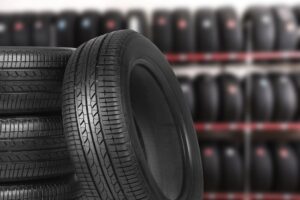Washing Machine Problems and Repair Solutions [fixed]
In today’s modern world, washing machines have become an essential component of our life. It is useful for washing all kinds of clothes, bed linens and other washable items. It simplifies the washing and rinsing of clothing in comparison to manual hand-washing and thus saves time and energy. Although Washing machines are undoubtedly powerful and durable, they can also experience issues just like any other technological device. In reality, we often do not appreciate the value of a washing machine until it abruptly breaks down.
Washing Machine Problems and Repair Solutions
Before going ahead with the problems that generally occur in the washing machine let’s have an overview of the features and parts of a typical washing machine :
-
Control Panel:
The machine’s top or front has a control panel that has several dials, buttons, and digital displays. We can choose many functions from there like wash programs, change settings, and keep tabs on the wash cycle’s development.
-
Drum/washing Tub:
The central part of the washing process is the drum or washing tub where you put your laundry. To agitate the clothes and speed up the washing process, it revolves. Typically, the drum is composed of plastic or stainless steel and has tiny holes for the release of water and detergent.
-
Agitator/Pulsator:
In traditional washing machines (top-loading), an agitator is located in the center. Agitator has paddles that create turbulence in water by moving back and forth. The turbulence in water helps in removing stains and dirt. In some of the modern top-loaders and front-loaders, a pulsator is used instead of the agitator. The movement of the pulsator is different from that of the agitator.
-
Water Inlet:
In the washing machine, there are one or more water inlet valves that are connected to the water supply of your home. Water can enter the machine through these valves during the wash and rinse cycles. We can choose the settings for water to be hot, warm, or cold to control the water’s temperature used by the machine.
-
Detergent Dispenser:
There are different compartments or dispensers where you can add laundry detergent, fabric softener, bleach etc. These products are released by the machine at the appropriate time during the wash cycle.
-
Pump and Drain Hose:
The washing machine drains the dirty water through a drain hose once the washing cycle is complete. The pump aids in draining the water from the drum through the drain pipe.
-
Spin Cycle:
The machine typically enters a spin cycle after the wash and rinse cycles. During spinning, the drum spins swiftly to remove excess water from the clothes. With fast spinning a centrifugal force is created which pushes the water out through the holes in the drum. This makes clothes damp rather than soaking wet and reduces the drying time.
-
Control Systems:
Modern washing machines frequently have sophisticated sensors and control systems. To optimize the washing process, these systems can identify elements such as load size, fabric type, and water levels. Additional features offered by some machines include delayed start, steam cleaning, and programmable wash cycles.
It’s vital to remember that the features and functionality of various washing machine models and brands may differ. However, to complete the wash cycle, the fundamental steps like adding clothes, choosing a wash programme, adding detergent, filling the water, agitating or tumbling, draining, and spinning remain the same.
Although washing machines exist in a wide range of configurations, they share several commonly recurring issues.
By using the information offered here, you’ll be aware of the problems to watch out for and may be able to address any issues before they get worse.
Let’s look at common washing machine problems to watch out for!
-
Moving around erratically:
It is normal for your washing machine to vibrate and move a little bit during the washing cycle. However, if your washing machine starts to bounce around or move a lot, this means the washing machine isn’t flat on the ground. It can be the case that the shock absorbers have disconnected from the chassis of the washing machine or if your washing machine is situated on uneven terrain.
-
Making a lot of noise:
A washing machine may make some noise while it is running, but if you notice a sudden increase in noise, there are several potential causes. Most frequently, it will be because you unintentionally put some trash, such as pennies, in the washing machine along with your clothes.
If you don’t see any debris in the drum, it may be that something got stuck there. In this situation seek some professional help from nearby repair service businesses.
-
Not spinning:
While your washing machine’s refusal to spin may be an indication of some significant problems. But many times it might not spin if the load it is handling is either too big or too tiny. Try switching your load again because many modern washing machines only spin when they reach a certain weight. If this doesn’t work then go for professional help from a good repair service.
-
It won’t Drain:
Washing machines not draining is a very common problem but it can be fixed easily. Most of the time it is caused by a blocked drain hose. To fix it, first, pull your machine out, disconnect the hose and then pour the water away. Check for any blocks and clean the filters. Seek help from professional repair services in case you cannot fix it on your own.
-
Not starting:
There are many reasons which cause a washing machine to not start. First check the main power switch for loose connections and fuse, if the fuse is okay etc. Sometimes the main power switch or the control module (PCB) of the washing machine stops working. In this situation call a repair professional from Washing Machine repair services to examine it.
Conclusion
Besides the above-listed common issues, other technical issues could be encountered during washing machine usage. Some of the minor issues in a washing machine can be easily fixed at home. However, it is advisable to not work on any repairs by yourself if you aren’t confident enough about the results. You should always seek professional help to repair from trusted repair services. Getting a washing machine repair service near you has become easier than ever. There are many online appliance repair services available.

![Washing Machine Problems and Repair Solutions [fixed] Washing Machine Problems and Repair Solutions [fixed]](https://mytechbug.com/wp-content/uploads/2023/09/washing-1.png)















